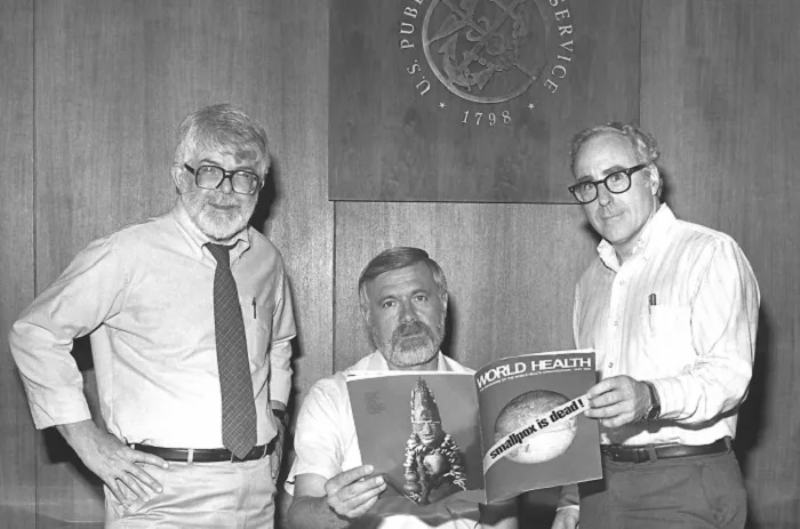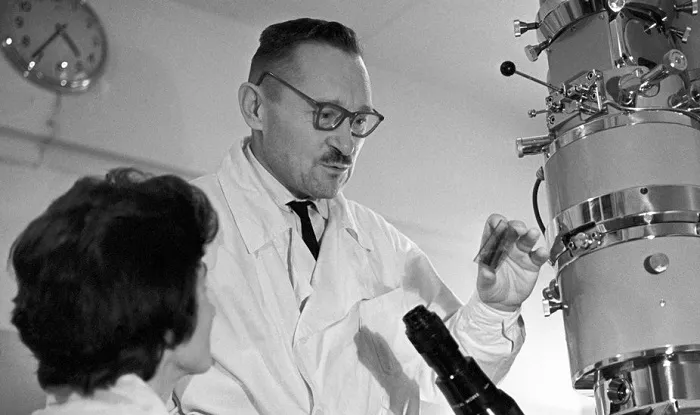Smallpox ravaged all humanity, starting in the years before Christ, reaching Egyptian merchants, North Africa, and India, and then to the most remote communities in the world through trade and conquests. The facial scars from this disease were even found on Egyptian mummies dating back to 1600 BC. The oldest smallpox outbreak case ever recorded happened in the war between the Hittites and Egyptians in 1350 BC.
Treatment of smallpox, and the blankets
It is known that the disease killed all of the civilization’s heirs, including the Hittite king and his son. The Hittite civilization is the first of many civilizations that were destroyed due to this disease. By 180 AD, the death toll from smallpox was 7 million. This caused a decline in the Roman Empire. The Spaniards and Portuguese carried this disease to the American continent, thereby breaking the Aztec and Inca civilizations. In the 100 years since the Spanish arrived in Mexico in 1518, the local population, which is thought to be around 22 million, dropped to 2 million.

Along with colonialism, the whole world started to experience similar cases. In 1763, Jeffrey Amherst, the commander of the British armies in North America, was the first to unleash biological warfare by proposing to use the liquid obtained from scabs and blisters to apply it on blankets and give them away to the Indian tribes. In the 19th century, the American government used the same biological weapon against the Indians. Thus, smallpox caused the deaths of about half a million people, more than the number of people who died from wars and other epidemics before the 20th century. This is the most painful and neglected disaster regarding smallpox disease.
Following Edward Jenner’s proven vaccination technique, this practice has spread to many parts of the world. Subsequently, in the 19th century, the cowpox virus was replaced by the vaccine virus, which was the first example of a vaccine obtained from cows. When administered orally or by injection to a person, the vaccine neutralizes or destroys offending microorganisms by causing lymphocytes to produce certain antibody proteins. The vaccine consisted of living, attenuated, or dead microorganisms (sometimes part of the protein that makes up the organism).
World Health Organization to fight smallpox

In 1926, the World Health Organization’s (WHO) Smallpox and International Vaccination Commission began to examine the content of the smallpox vaccines and set the production, storage, and distribution of the vaccines to a certain standard. Due to this inspection, vaccine production was brought under the control of Europe and North America until the mid-1900s. However, there was uncontrolled production in many parts of the world. Immunoglobulin, a vaccine produced by the human body against antigens and prepared by plasma in the blood of people who have recently been vaccinated, was released in the early 1950s. During a vaccination, this substance is used when the body can’t make enough antibodies on its own. Antibodies are the body’s defense against antigens.
To summarize the treatment of smallpox, the smallpox vaccine was produced to a certain standard, and the introduction of the vaccine immunoglobulin produced by the human body resulted in the virus being removed from all of Europe and North America. This resulted in a worldwide effort to eradicate smallpox. The need for this universal effort and sensitivity comes from the fact that the variola virus causing smallpox only survives in a human cell, and if enough people get the vaccination, this means complete extinction of the virus.
An international call from the Russian professor

It was the Russian professor Viktor Zhadanov from the Soviet Union who proposed the need for a global program to eradicate the disease and led the treatment efforts beginning in 1958. At that time, the Soviet Union was a country with a vast territory where smallpox was common. At the same time, the WHO’s regional program aimed at eradicating smallpox on the entire American continent was the first joint international program implemented. The 12th World Health Congress, convened in May 1959, made the announcement of the undertaking of a universal effort to put an end to smallpox. This initiative was previously launched on the entire American continent in 1950 but began to weaken. At the 19th World Health Congress held in 1966, it was decided to use WHO funds for this universal effort.
Even after this promising progress, the reluctance to continue the program still existed, and many people began to believe that it would not be possible to completely eliminate the smallpox disease. The suspicions were heightened by the fact that the remote settlements’ unknown situation, a lack of health services, logistical issues, and failures to eradicate malaria all contributed to the suspicions. However, the introduction of effective dry vaccines and the realization that this virus can live only in the human cell provided a great advantage in the struggle to root out the disease.
The last smallpox case in Somalia

With the help of mass vaccination campaigns held between 1967 and 1980 and monitoring programs aimed at researching and detecting the types of smallpox throughout the world, the future was brighter. The Soviet Union contributed to the campaign with 14 million doses of vaccines and the United States with 190 million doses of vaccines. The last case of smallpox in the world was reported on October 26, 1977, in Merca, Somalia.
To date, there are only two laboratories left that investigate the smallpox virus. One of these is the Moscow Research Institute in Russia, and the other is the Centers for Disease Control and Prevention (CDC) in Atlanta, the capital of the state of Georgia, USA. Even though the genetic sequence of the smallpox virus is known, there has been debate about whether the viruses from this latest case, which happened many years after the last one, should be kept to study or thrown away.
The world population is now too vulnerable to the possibility of the outbreak of new smallpox due to vaccination programs stopping after the disease has been rooted. There is growing anxiety about the possibility that this virus might be stored and used as a biological weapon by terrorists or governments. The complete destruction of the smallpox virus was postponed from June 1999 to June 2002.

